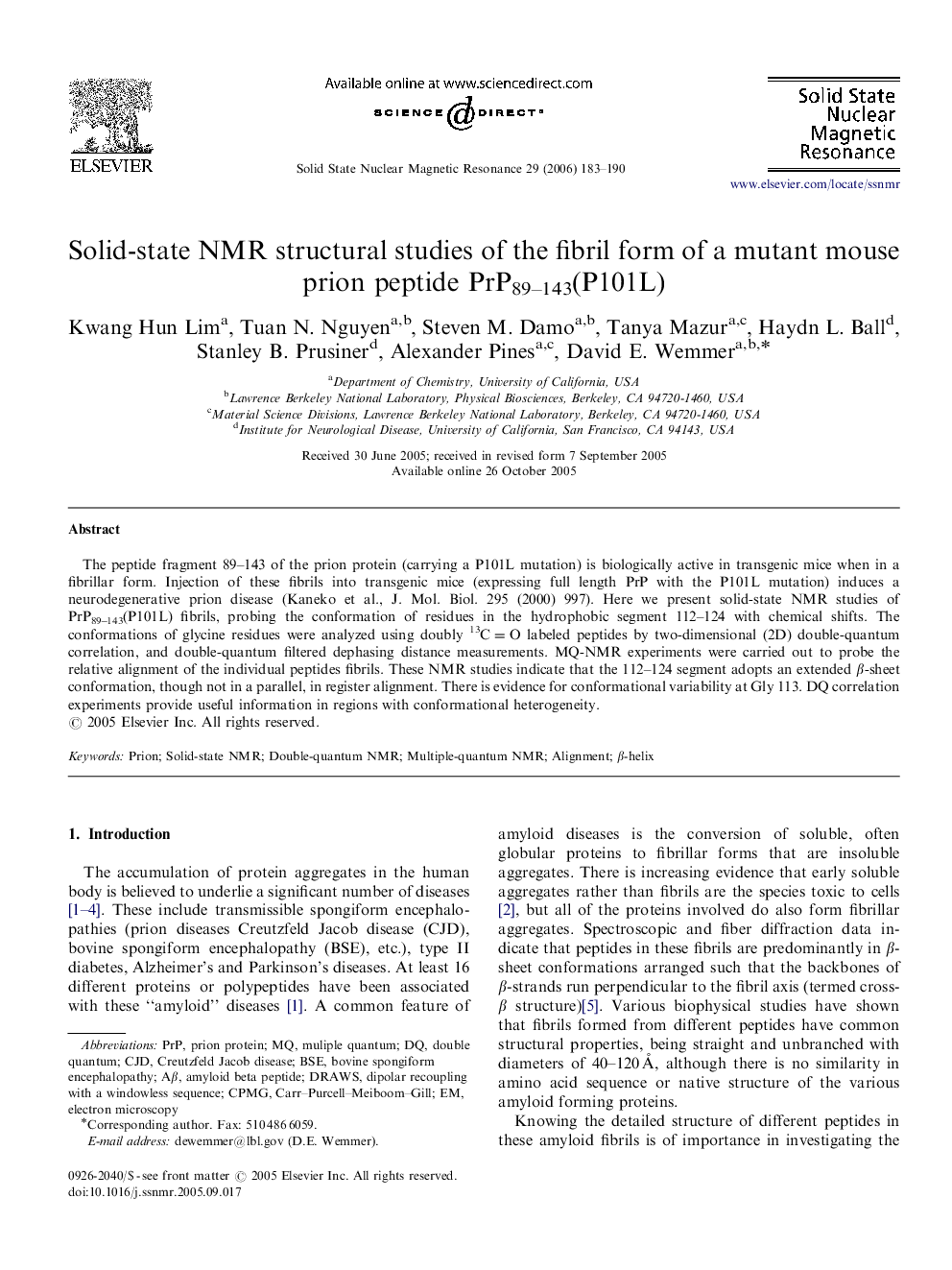| Article ID | Journal | Published Year | Pages | File Type |
|---|---|---|---|---|
| 5420989 | Solid State Nuclear Magnetic Resonance | 2006 | 8 Pages |
Abstract
The peptide fragment 89-143 of the prion protein (carrying a P101L mutation) is biologically active in transgenic mice when in a fibrillar form. Injection of these fibrils into transgenic mice (expressing full length PrP with the P101L mutation) induces a neurodegenerative prion disease (Kaneko et al., J. Mol. Biol. 295 (2000) 997). Here we present solid-state NMR studies of PrP89-143(P101L) fibrils, probing the conformation of residues in the hydrophobic segment 112-124 with chemical shifts. The conformations of glycine residues were analyzed using doubly 13C=O labeled peptides by two-dimensional (2D) double-quantum correlation, and double-quantum filtered dephasing distance measurements. MQ-NMR experiments were carried out to probe the relative alignment of the individual peptides fibrils. These NMR studies indicate that the 112-124 segment adopts an extended β-sheet conformation, though not in a parallel, in register alignment. There is evidence for conformational variability at Gly 113. DQ correlation experiments provide useful information in regions with conformational heterogeneity.
Keywords
Related Topics
Physical Sciences and Engineering
Chemistry
Physical and Theoretical Chemistry
Authors
Kwang Hun Lim, Tuan N. Nguyen, Steven M. Damo, Tanya Mazur, Haydn L. Ball, Stanley B. Prusiner, Alexander Pines, David E. Wemmer,
